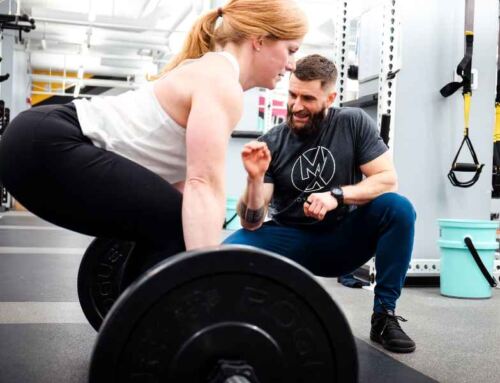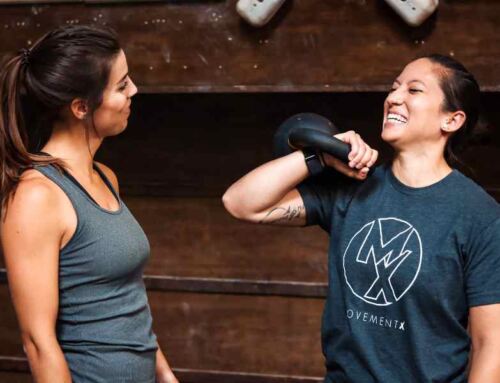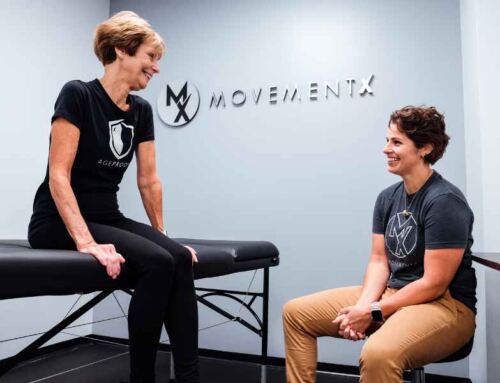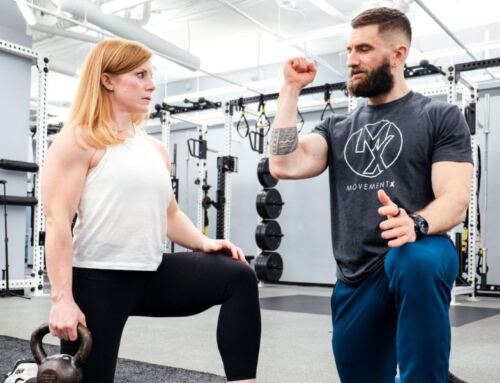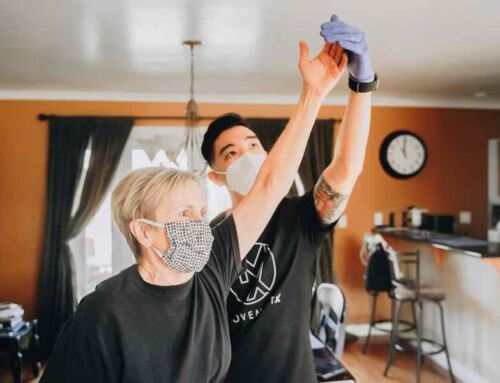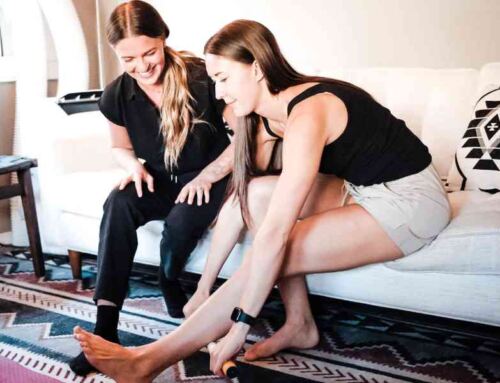Improving Mobility While Working From Home
Working from home offers many benefits—eliminating the stress of a lengthy commute, answering emails in your pajamas, and popping into Zoom meetings with coworkers without having to leave your couch.
However, working from home can also mean slouching on that couch with your laptop for hours on end, forgetting to take breaks, and not giving your body enough of what it was designed to do—move.
In this article, you’ll learn how to stay limber, pain-free, and sit with proper posture with four tips and tricks you can easily try at home.
4 Tips To Improve Mobility From Your Desk
Whether at your home or at the office, sitting at a desk all day can have a significant negative impact on your physical health over long periods of time. It’s why sitting was recently named “the new smoking.” These long-term negative impacts include…
- Neck and shoulder pain
- Lower back pain
- Increased stress
- Cardiovascular diseases
- Obesity
- Other musculoskeletal disorders
Fortunately, there are simple ways to improve mobility, minimize discomfort, and reduce your risk of developing any of these conditions linked to extended sitting. From optimizing your workspace and taking breaks to stretches and strengthening exercises, try these four tips to improve your mobility and support your physical health while working from home.
1. Stand Up and Move
Getting up from your seat and walking around—even for a short period of time—can reload your legs, activate your muscles, and promote blood circulation throughout your body. It will also elevate your mood and give your eyes a break from screens. It would be helpful to set a timer on your phone every hour.
2. Get the Right Ergonomic Set-Up
Having an ergonomic work-from-home set-up that is optimized for proper posture and body mechanics can make a big difference. The trick here is to achieve 90 degree angles—at your ankle, knee, hip, and elbow joints—with your feet and forearms supported.
Are your feet dangling off the floor? Try lowering your chair or getting a footrest. Are your forearms or elbows unsupported? Try a chair with armrests that support the weight of your arms and shoulders.
Also, let comfort be your guide. If a lumbar support causes discomfort, a standing desk doesn’t feel right, or a chair looks nice but doesn’t help you achieve an ergonomic position, then perhaps it’s best to not use it.
Also, you don’t necessarily have to be sitting or standing all day. If you have a desk set-up that allows you to stand and sit, try alternating these positions throughout the day. This will create movement in your day, and reduce the likelihood of stiffness in the lower back, neck and shoulders.
3. Have Your Go-To Stretches
Arm yourself with go-to stretches you can easily perform at your desk when you may be feeling a little extra tense or tight. Here are some of our favorites to help your body feel its best while working from home.
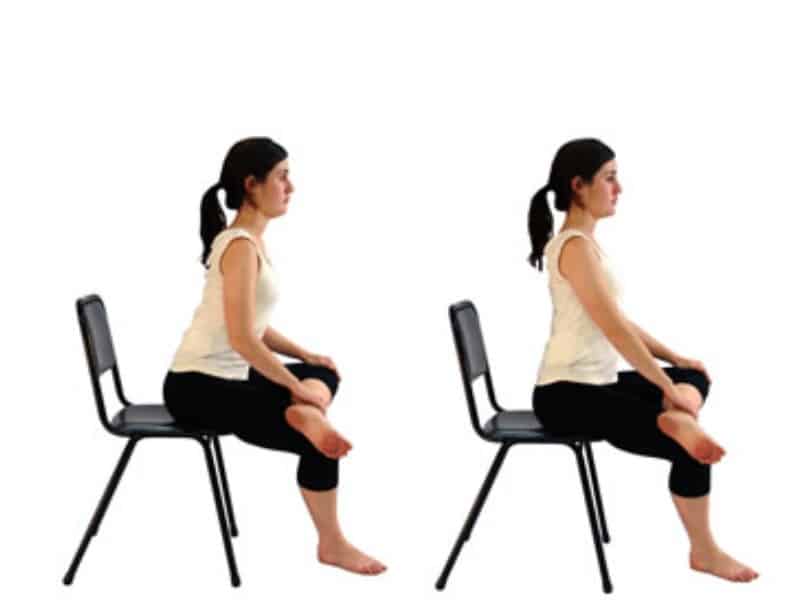
Figure-4 Stretch
Sitting in your chair, keep one foot flat on the floor and the other foot crossed over the top of your opposite knee. With a straight back, lean forward slightly, just until you feel the stretch. Hold this position for 30 seconds, then repeat with the other leg.
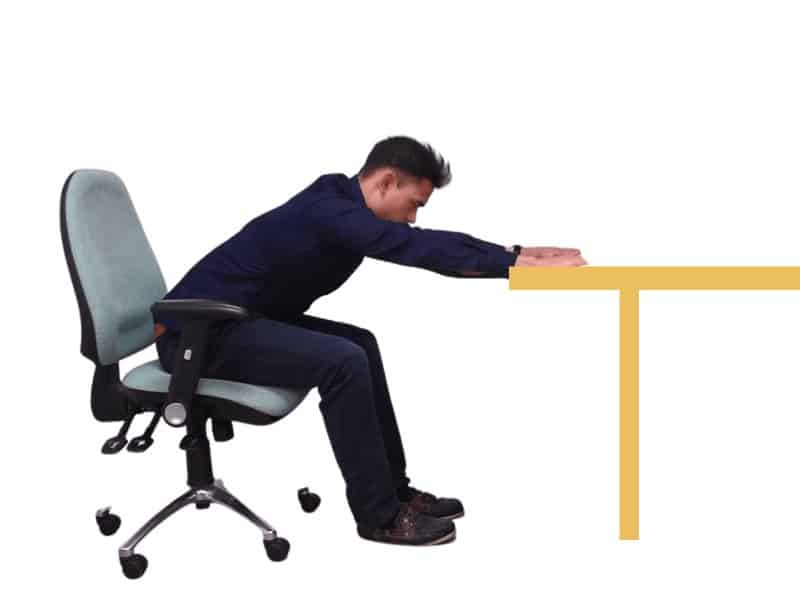
Seated Child’s Pose
In your chair, half an arm’s length away from your desk and with both feet flat on the floor, place your palms flat on the desk in front of you. Lean forwards and lower your chest towards the floor, keeping your palms on the desk and head relaxed. Hold this stretch in your shoulders and back for 30 seconds.
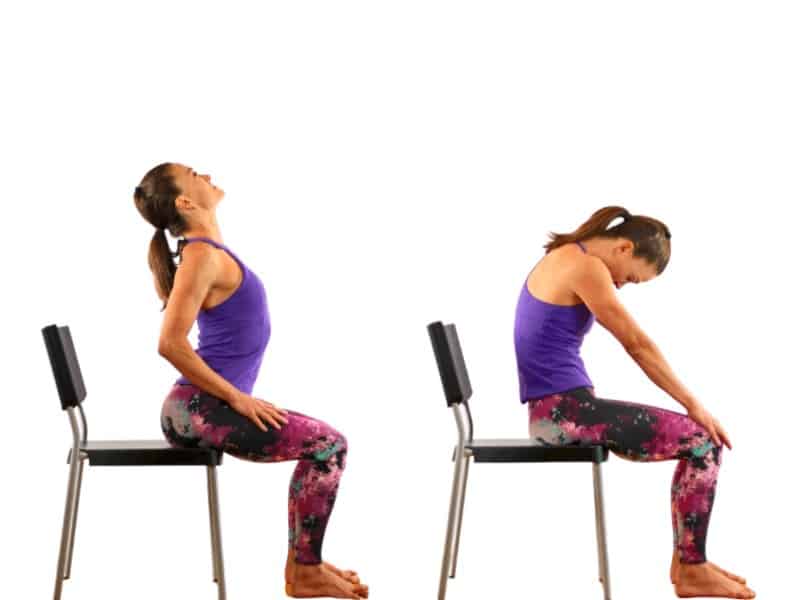
Modified Cat-Cow
A gentle dynamic stretch, the cat-cow movement can be easily modified to do at your desk. With both feet firmly planted on the floor, sit up tall in your chair and intentionally engage your core. Arch your back, puffing out your chest and shifting your hips forward. Then, slowly curve your back the other way by tucking your hips in, rolling your shoulders forward, and rounding out your spine. Repeat this movement 10 times to promote spine mobility.
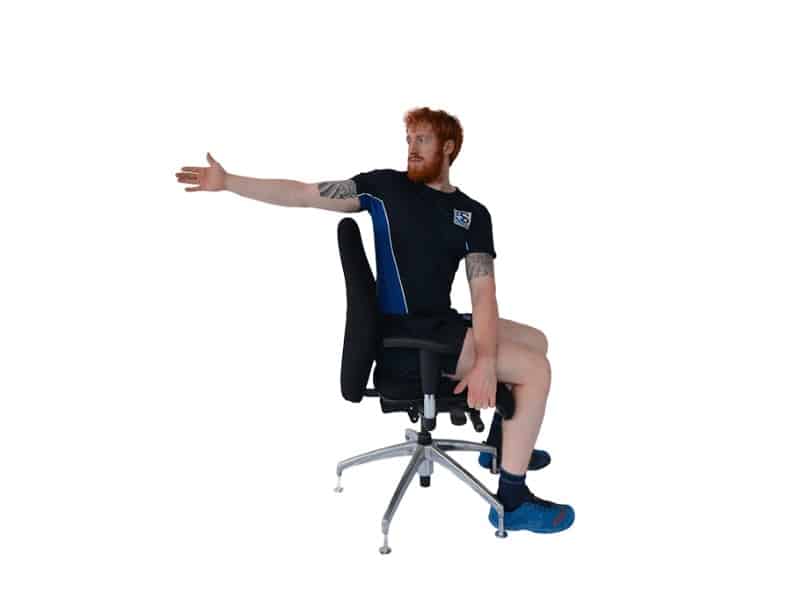
Thoracic Spine Rotations
Another great movement for spine care is the thoracic spine rotation movement in sitting. Place your hands behind your head and interlock your fingers. While sitting up straight with your elbows out, slowly rotate your chest to the left and then to the right. Repeat five more times.
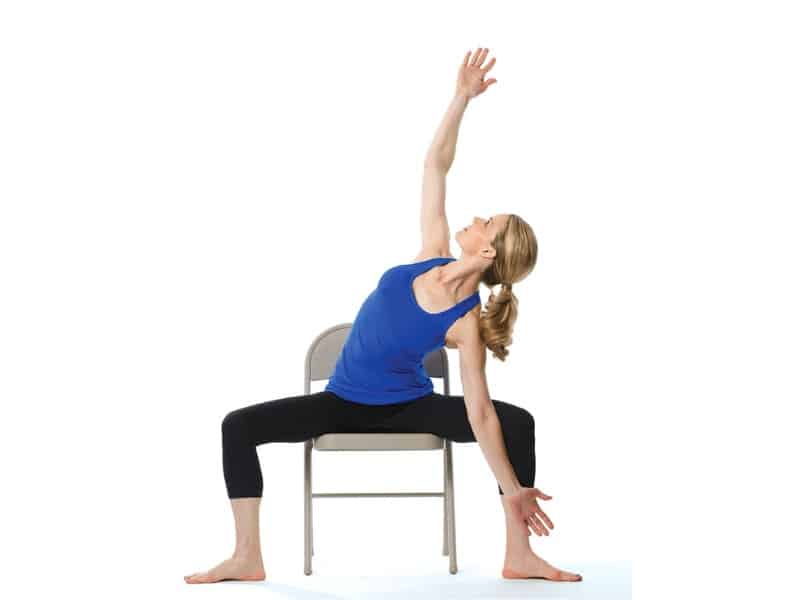
Open Book Stretch
This is another great movement to improve spine and shoulder mobility. In your chair, bend forward so that your hands rest on the floor right next to your feet. With your left hand on the floor, rotate your torso and extend your right arm up toward the ceiling. Return your right hand to the floor and alternate to the left hand reaching toward the ceiling. Repeat and alternate up to 10 times.
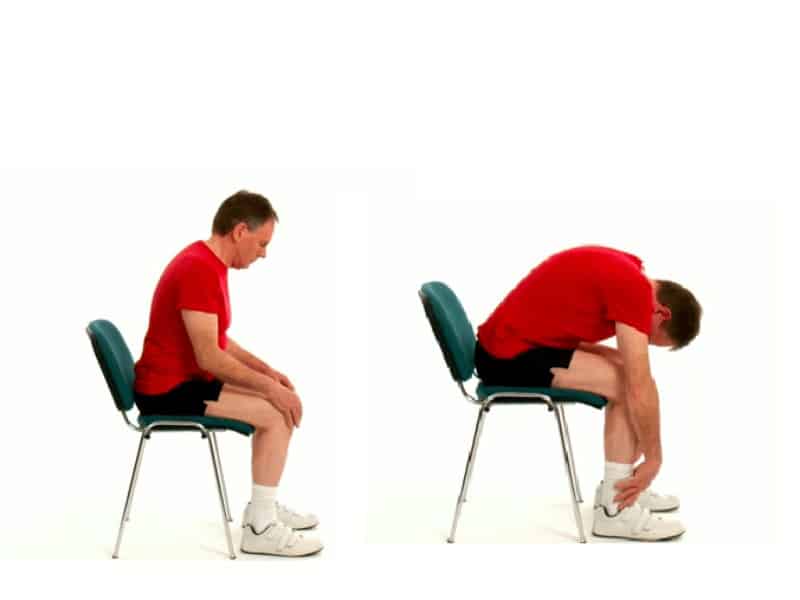
Seated Trunk Flexion
This is a great movement to do when you have a couple of minutes in between calls. In your chair, gently bend forward and let your spine round. This will help to relax the muscles in the mid and lower back. It’s also important to let your neck relax. Reach your hands in between your feet, and try to touch the floor. Hold this for about 5 seconds, and repeat 10 times.
4. Practice Good Posture
Achieving an ergonomic workstation will set you up for success, but it’s ultimately up to your body to actively support and maintain good posture. Ideal posture actually involves a significant degree of muscle strength in your core, back, shoulders, and neck.
Strength can and should be trained. So try to sprinkle some planks, push-ups, bird-dogs, or air squat exercises into your workday. This will help you build and maintain the strength needed to support correct posture for hours on end.
Conclusion
Looking for personalized, one-on-one care to help improve your mobility or decrease pain at work?
At MovementX, our physical therapists and personal trainers are highly specialized and carefully chosen experts who are deeply passionate about helping you achieve your movement goals, whatever they may be.
Work with a trusted professional via telehealth, in-home, or outdoor so you can keep living your healthiest and best life. Book a session today.
About the Author
KT Prominski, PT, DPT is a physical therapist in Northern Virginia with MovementX. Highly experienced in the treatment of orthopedic pain and sports injuries, KT loves helping those who want to get more active. In her spare time, she enjoys hiking, playing golf, kayaking, beach volleyball, and playing with her two dogs.



